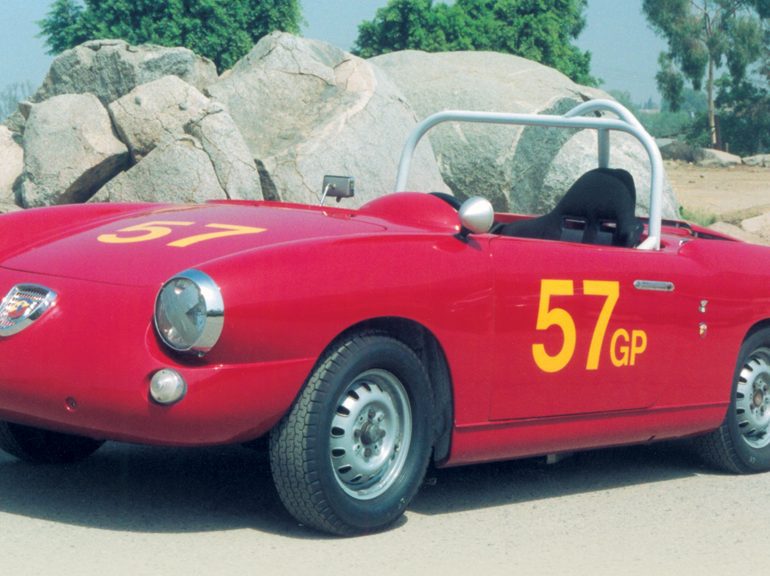1959 Abarth Allemano Spyder
The Abarth Allemano Spyder is about as curiously 1950s Italian as you can get. Carlo Abarth, of course, made his name and his fortune by taking vast numbers of Fiats and turning them into race or high performance road cars. He was so good at this, that the name Fiat often disappeared from the creation altogether, and on many of his machines, there was a lot more Abarth than Fiat.
While many of the Fiat-based saloon cars had relatively standard or slightly modified bodywork, some of the cars were sent (in the grand Italian tradition) to one of the Carosserie for quite special bodies to be built. Abarth made very considerable use of Zagato for this purpose, as did Alfa Romeo, Ferrari, Maserati and Fiat, as well as a number of non-Italian manufacturers. Zagato, however, was not just a body builder, and the multi-generation company was often deeply involved in the design of a whole model in conjunction with the original manufacturer.
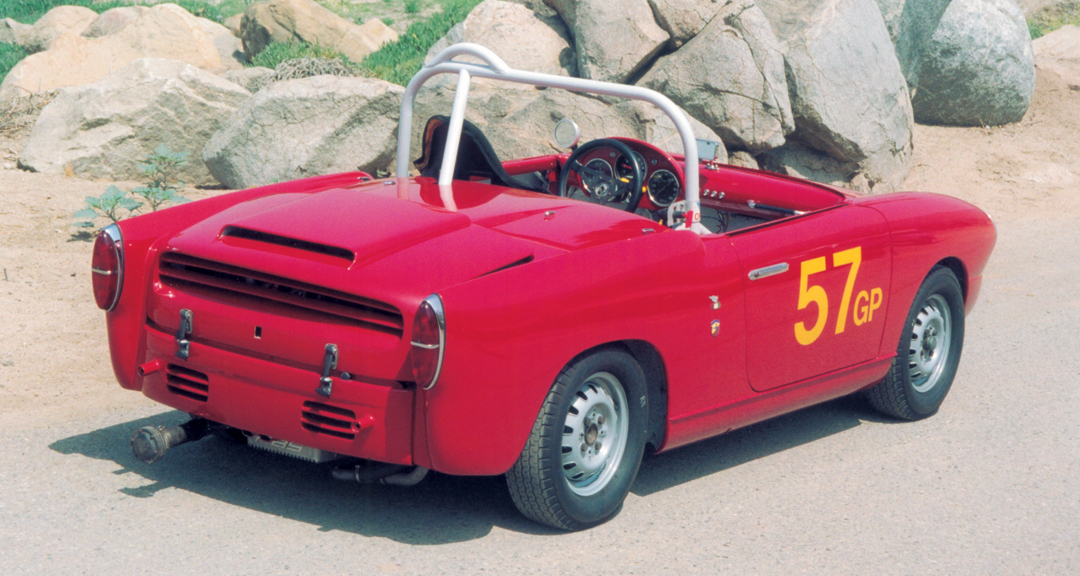
Austrian-born Abarth had a reputation as a man who could provide improvement parts for very ordinary cars before he started producing his own. His company managed to be one of the few Italian concerns that kept this end of the business going while producing entire cars. When the Fiat 500, and then the 600, came along in the 1950s, Abarth had something he could really go to town on, and his collaboration with Zagato resulted in the tiny but quick, and aesthetically beautiful, Fiat-Abarth Zagato – the ultimate expression of which was the “double-bubble” 750. This was the tweaked 600 with enlarged and improved engine and suspension dressed in Zagato’s elegant little coupe body work.
In the late 1950s and early 1960s, the race tracks of America were filled with the buzz of tiny Italian engines as the Abarth gained enormous popularity after a few very successful years of both racing and rallying all over Europe (especially in Italy). Part of the popularity of the early Zagato coupes was the fact that the most successful American team running them was the Franklin D. Roosevelt, Jr. Racing Team. Roosevelt was the son of the late four-time American President “FDR” but was not involved in politics. He was in the car business, and his huge red transporter travelled the length and breadth of the land in national and international events. The sight of the little Italian beauties flowing out of the back of that transporter at Lime Rock, Bridgehampton, Sebring or Riverside is never to be forgotten. They raced in the long-distance events, and in production sports car sprint events, and did well in both. On the road, the cars made the American metal of the time look even more monstrous. The final development, which was not a Fiat, was when Abarth and Simca from France collaborated to produce a two-liter version…the Abarth-Simca which was the fastest small car anyone had ever seen. It frightened Corvettes in a way no one thought possible.
Toward the end of the 1950s, 1959 to be precise, Zagato was turning out so many variations of car, that the firm had to tell Carlo Abarth that they couldn’t continue with Abarth’s plan to run an open version of the 750. Thus, another twist of the Italian tale, when the small firm of Allemano enters the picture.
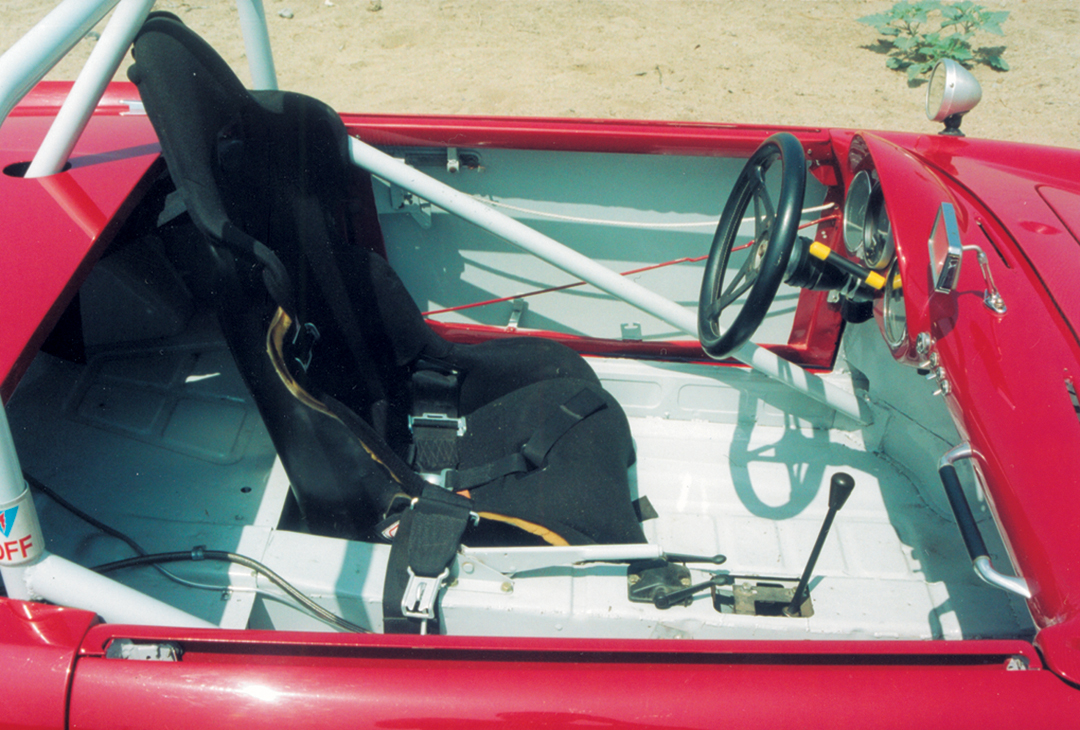
Photo: Casey AnnisPhoto: Casey Annis
Allemano is one of those Italian body designer/builders that many people have heard of but very few know anything about, and indeed there is very little written about them. The same is true for Colli and others, who produced great things but are relatively…or totally…obscure. The company was in business from 1927 to 1965 and few examples of anything prewar still exist. Their main “production” runs were all with road going cars – they never built racecars – and included Abarths based on 600, 850, 2200 and 2400 cc units. In addition to Abarths, Allemano also did some notable postwar work for Maserati, most notably the A6G 2000 and 5000.
The 2200 and 2400 Abarth six-cylinder cars are extremely rare. Annelise Abarth, the great man’s widow, owns a red coupe version based originally on the Fiat 2300.This was meant for production but it apparently never happened. Allemano bodied only one Ferrari and that was the 1948 Mille Miglia-winning, 166-based machine driven by Clemente Biondetti. It is a rather boxy coupe, and in spite of the fact that model makers, the miniature kind, also portray this car as a spyder, it is unique.
Abarth 750 Allemano Spyder
In 1959, Abarth went to Turin’s Allemano works and asked them to build the spyder version of the coupe, based on a design he had developed with help from Michelotti – in Italy, everyone gets into the act! In creating the new spyder, Allemano followed the tried and tested custom of fitting hand-beaten aluminum panels over steel support tubes which had been first welded together.
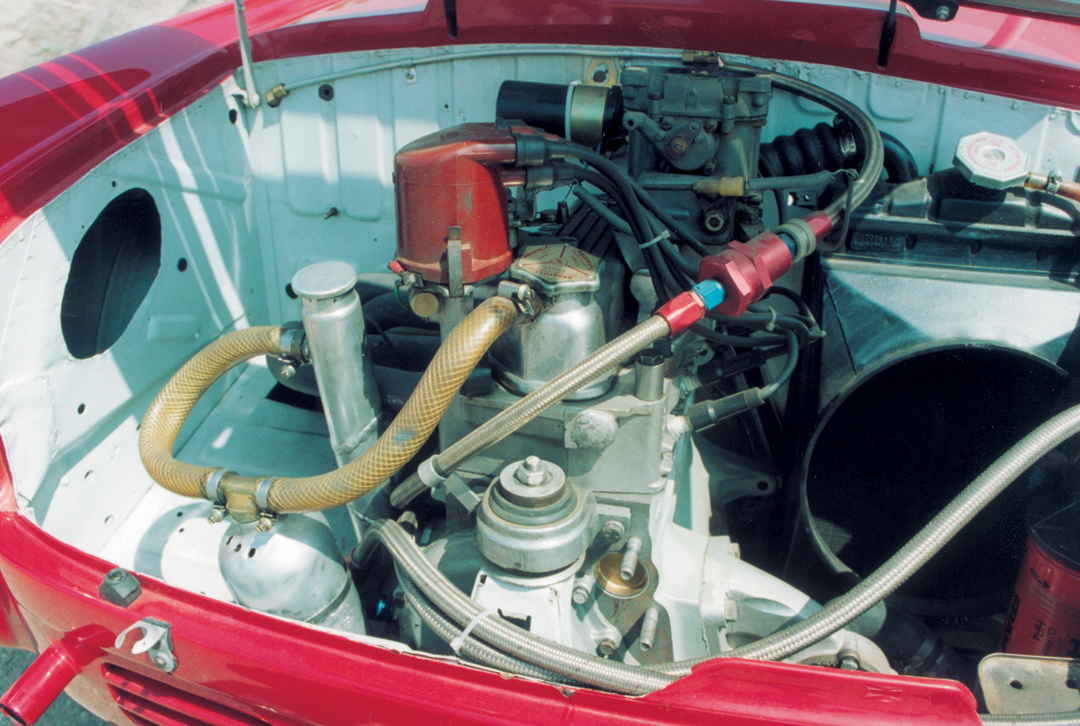
Photo: Casey Annis
To be totally accurate, Zagato built a few Series I spyders before Allemano took over and produced the Series II. The Series I cars had come with a wooden rim steering wheel, simulated knock-off hubs, bucket seats and occasionally white-wall tires! The Series II spyder was created by simply chopping the top off the Series II Zagato coupe (oh, the pain!) and this was also known as the Scorpione. This model had a steel body with aluminum doors and bonnet and rear deck and an improved wheel design. The rear bodywork was tidied up considerably, especially at the very back where the engine location caused problems in producing pleasing lines.
Sales of both coupes and spyders were brisk in the USA and the cars did well in SCCA H-Production racing. The original Abarth-built 750 engine gave way to either 833 cc or 843 cc units in the later Series II cars, and virtually all the spyders were exported to the USA. The car which you see featured on these pages (owned by Californian Steven Feig) was one of these later Series II cars, and although they were all built as road cars, most of them were converted for racing from a very early stage. This is slightly strange as early back-to-back tests of the spyder and the coupe tended to find the coupe having an edge on performance, though not by much. Such was the love of convertibles by Americans, however, that a number of them appeared in racing trim.
Feig’s car was purchased from a dealer who specialized in Abarths in Modesto, California, in 1988 and it came with a roll-over bar and race equipment and had an SCCA race history. The car was so original that even the tech inspection stickers were still there, which is more than can be said for much of the body structure which required a total ground-up restoration. It was a pretty rusty affair which had languished behind a barn for some years. Fortunately, Steven Feig is a Fiat and Italian car enthusiast, so the restoration was aided by a never-ending supply of Fiat “bits” from his many other cars. A donor Fiat 600 provided a replacement floor, while all the panels needed straightening. The interior was gone so this turned into a long, three-year restoration project, but it all came good when the car appeared at Carmel’s Concorso Italiano in 1992.
The author comes to terms with a rare spyder.
Photo: Casey Annis
Feig was really intending for this to be a show car but famed Dutch Abarth racer Ed Swart talked Feig into racing his newly refurbished machine. In 1993, the car appeared in West Coast VARA events and although the early races had sparse competition, the spyder was a winner in G Production first time out at Las Vegas Raceway. Feig found that winning was “a lot of fun” so the car became a regular fixture on the West Coast historic racing scene. It won again at Phoenix and several times that season. The spyder snatched the class championship in VARA in 1995 and 1996 against growing competition which included the odd VW, 998 cc Austin-Healey Sprites, Mini-Coopers, Fiat 850s and NSUs. By this time, Feig had installed a 903 cc engine, the motor which had appeared in the racing Fiat 850s of the time. All in all, the car has done some 35 races since it was restored.
Driving the Spyder
Having first seen the car at the 2000 Concorso Italiano, a chance to get behind the wheel didn’t come up until a visit to the owner’s hometown was arranged and some nice quiet country roads were found. I was invited to inspect Feig’s little collection of cars, or as it turned out, a large collection of little cars. Nestled away in his garage, back yard and several sheds were some wonderful bits of Italiana. The garage is shared by the spyder and a PBS sports racer, a Fiat-based machine built in Southern California with Hewland transaxle. This is an ex-Bob Snow car, a winner in D-Sports Racing and a well-known car. There’s also another Allemano body, this time on one of the 750 Abarth coupes, a car which made an appearance in the Herbie film, “Herbie Goes To Monte Carlo!”
Another Allemano spyder is tucked away in one of the sheds, awaiting restoration as a disc-braked racer. There is also an immaculate Abarth 1000 OTR which is an homologated turismo radiale car, and also a pristine 1949 Fiat 110E pillarless saloon. Dotted around the yard are donor Fiat 600s, and then in another shed are three tiny Topolinos, including a 1953C coupe, a 1952 Woody station wagon, and a most unusual and rare 1949 Topolino B delivery step van. These last three came as a “package deal.” Feig had to take them all for $750!
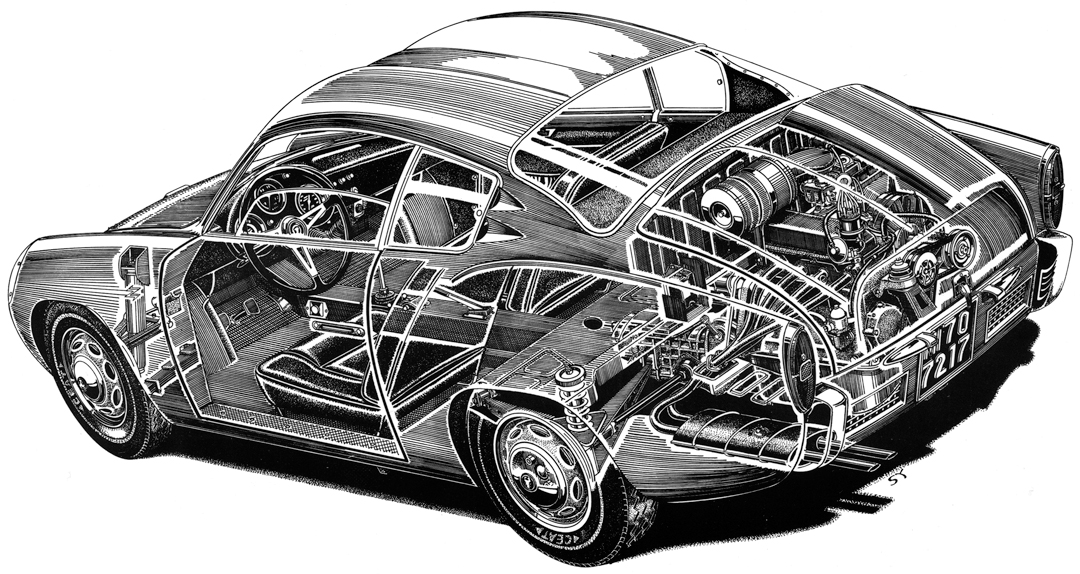
Illustration: Shin Yoshikawa
But I was here to drive the spyder, an event which had the added extra attraction of a State Patrolman pulling up, watching the test in full race gear on a fine bit of demanding country road, waving, and then departing! Oh California, I love this car state!
What is instantly notable in this petite spyder is the lightweight and low-end torque. The little car really takes off, and Feig has found he can get two or three places at the start of a race because of it. However, he also finds that this Fiat 600 drum-brake-equipped racer is then usually out-braked into the first corner. While I worked the brakes over, they stood up well under road conditions, which are not at all like racing. Fitted with 450L 12” rims, only 3.5” wide, the car will slide, and that is what needs to be used to stay on terms with disc brake machines. The setup is well designed to slide and it does it in a way that is not only controllable but a great deal of fun. The tires are Dunlop 450 L-12s. While oversteer can be provoked, especially in tight corners, this car is not the oversteering nightmare you might expect. Going into a corner, braking takes place first, then a little steering and half throttle, and on exit, the throttle needs to be fully used. The revs rise, the back end comes around and the car pulls rapidly out of the turn fully under the driver’s control. However, it’s easy to catch if overdriven. On faster bends, the whole car can be slid, though this takes getting used to.
The maximum revs Feig uses are 7200 rpm, and the engine produces 70 bhp at that speed at the flywheel. This car has a rather special close ratio box with non-standard 3rd and hand-made straight cut 4th gear, and this overcomes the big gap between 3rd and 4th associated with the more standard Fiat box. The Allemano Spyder runs out of speed at 100mph – that’s as fast as it will go, so long circuits are not the best place for it. It spends a lot of time in top gear at long tracks like Willow Springs, but it loves Las Vegas, where 3rd gear is used a lot. At high speed, one can just begin to detect that the front end might get a little loose on a rise, but that’s a minor matter. The only shortcoming on the car, not noticed in this test, is that the brakes are a handicap under race conditions. The pad area is very small, and though Abarth commissioned Campagnolo disc brakes, they are very hard to find and expensive. To put bigger brakes on the car would require wheel and bodywork changes.
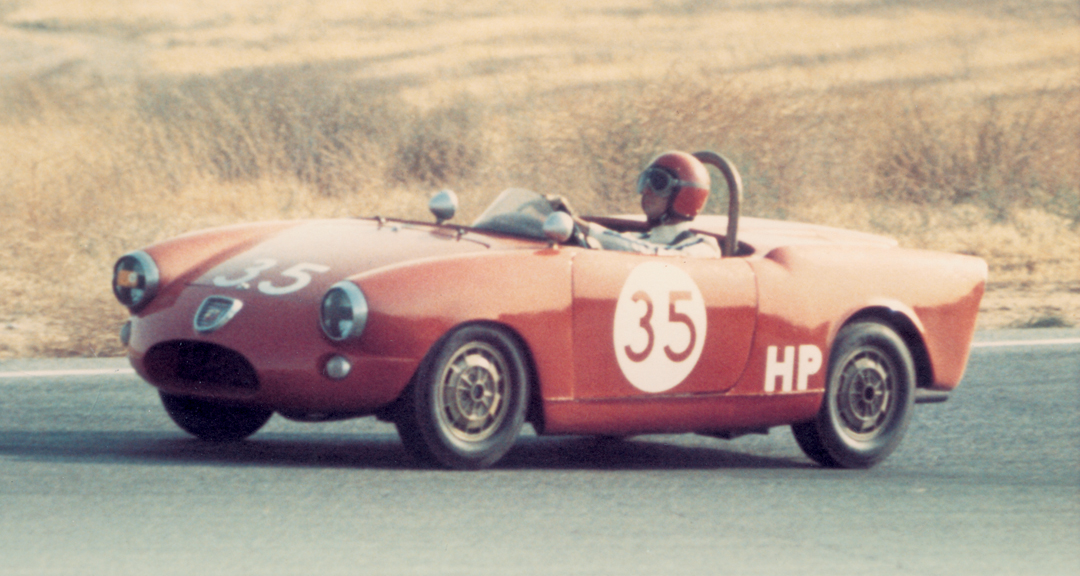
Photo: Steven Feig Collection
Handling is assisted by Fiat 600 adjustable Koni shock absorbers which have been rebuilt. Aside from the change in engine size – the evolution from 750 cc to 903 cc – the rest of the car is very much as it was first built, and pretty much as Steven Feig plans to keep it. It has original wheels and tire sizes, no anti-roll bar for racing, and the suspension has not been modified. The rear-mounted radiator is quite low, so attention needs to be paid to where the car is placed on – or off – the road. Feig has had this problem twice and off-track excursions have a big impact on this sensitive and vulnerable area. This has happened at several “rocky” tracks, but Feig has resisted the temptation to go to a front-radiator arrangement, though he has added a shroud to force air to the radiator. It is the shroud which gets caught occasionally. Abarth put a small auxiliary radiator on most of the cars. This one uses an electric fan, and in race conditions the cooling doesn’t present problems in spite of some very high ambient temperatures.
Getting into and out of the spyder is much easier than doing the same with the coupe, and there are tales of big racing drivers getting stuck in their little Zagato 750s. The hooded instrument panel sits in front of the driver, and the basis arrangements for the coupe and spyder were very similar, though the spyder comes out some 300 pounds lighter. To the right of the driver is the short up-right gear lever, with choke and starter controls. The engine barks into life, and warms up quickly. While it’s always difficult to convey to a third party the feeling one gets driving off in an unfamiliar car, I fully expected the first set of switch-back turns to have the engine trying to come around and get in front of me. It actually took some effort to begin to provoke some action back at the rear, and when the tires warmed up, that movement of the posterior was all tidy and predictable. Just as well, with the Highway Patrol present!
A freely blipping throttle keeps the revs at working level, and it was easy to see how the owner enjoys the car on tight circuits. It is all a question of footwork and timing, keeping those revs up with minimal braking, balancing hands just moving the steering wheel and the all important throttle being jammed open at just the right moment. Though 70 bhp is pretty noticeable with the lightweight, it is not a lot to work with; so the car needs to be driven at its limit to get the best out of it – certainly on the circuit. Here on hard roads, it’s just a lot of fun.
Cooling vents in the Allemano SpyderÕs tail provide badly needed air flow for the rear-mounted engine and its engine bay-mounted radiator.
Photo: Casey Annis
The gearbox, with its enhanced ratios, makes using the available power even easier, and produces a smoothness not imaginable with the original Fiat gearbox. These engines rev quickly, though, so the gauges need to be watched in first gear. The torque of the 750 Abarth-tuned engine was always amazing, so the combination of the 903 cc unit, the gearbox, and the lightweight is sparkling. Now can we try this back to back with a coupe, please?
Buying and Owning an Allemano Spyder
In spite of the hard work of people like John de Boer who counts and records Italian cars (!), the exact number of spiders is unknown; and until he did his research, very little was known about which Fiats became which spyders. The number is small but not so small as to mean there are none about…just ask Steven Feig. An example needing restoration could be bought for very little money, but you need to find the supply of parts to do the work, or have an expert do it, and that is expensive. A good example is going to be several thousand dollars more, though the market is not entirely certain on cars like these. Once bought, however, maintenance is not a major problem. Given a solid engine, the cars were so robust that not a lot went wrong. But don’t leave them out in the rain, as they will disappear. That’s why there aren’t so many, especially on the East Coast.
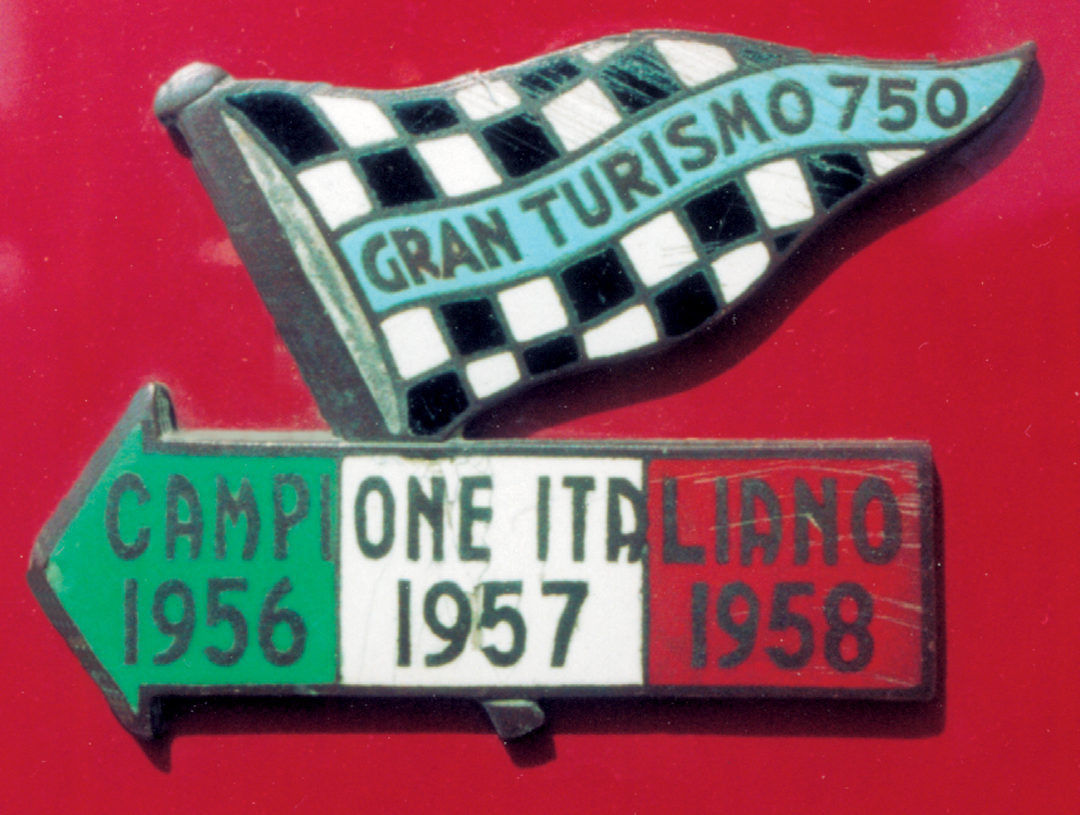
Specifications
Chassis: Standard Fiat 600 frame
Wheelbase: 78”
Length: 136”
Weight (approx): 1200 pounds Suspension: Front: Transverse leaf spring with wishbone. Rear: Diagonal swing axle with trailing arm, coil springs
Engine: Inline, 4-cylinder Abarth Grand Touring
Capacity: 903 cc
Valve operation: Pushrod overhead valves
Power: 70 bhp @ 7200 rpm
Gearbox: Four-speed close ratio
Brakes: Fiat Drum
Tire size: 4.50 x 12”
Rim size: 3.5” x 12”
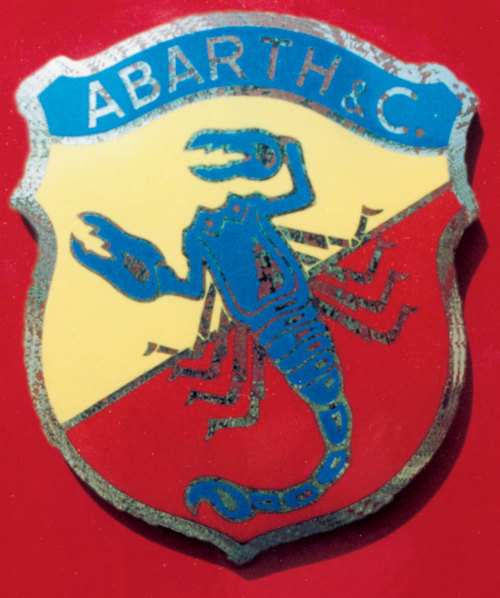
Resources
Auto Italia
June, 2001
De Boer, J.
The Italian Car Registry
1994
Road and Track
October, 1960
Sports Cars Illustrated
February, 1959
Thanks to Steven Feig, Peter Collins and David Burdette


